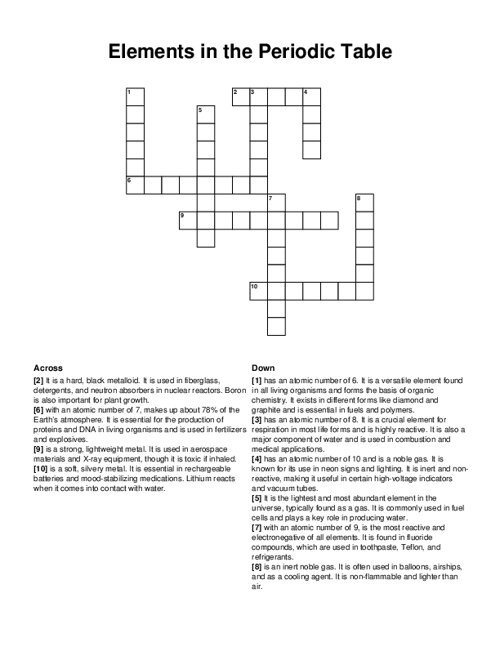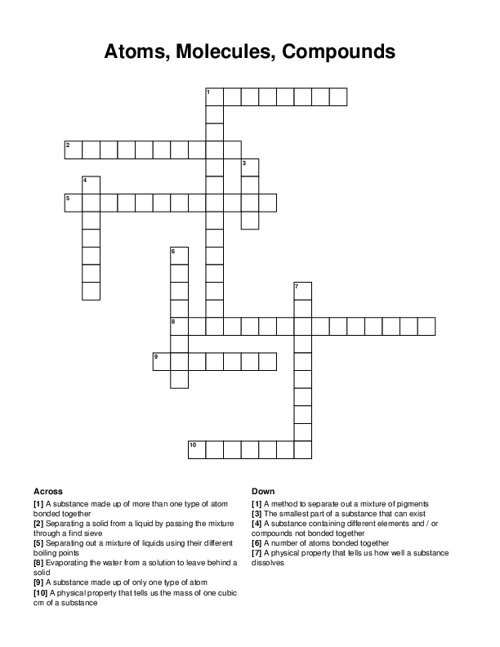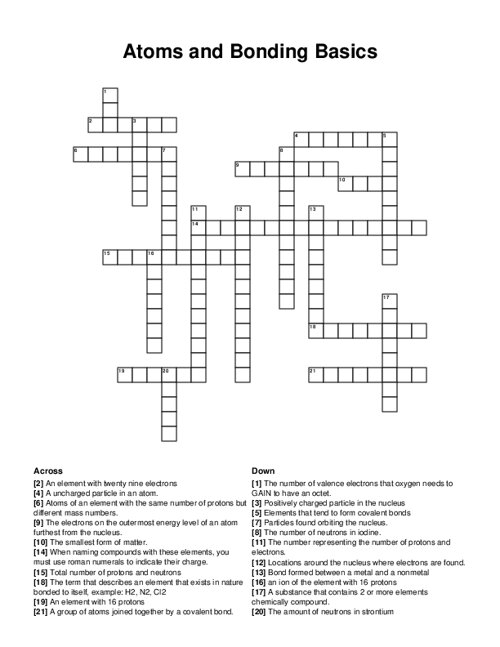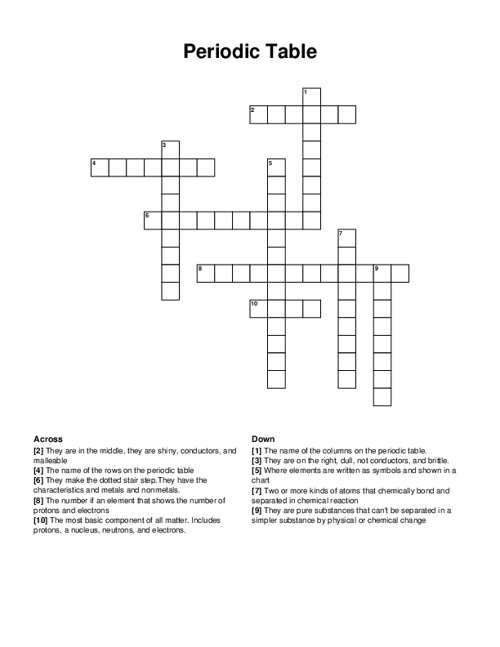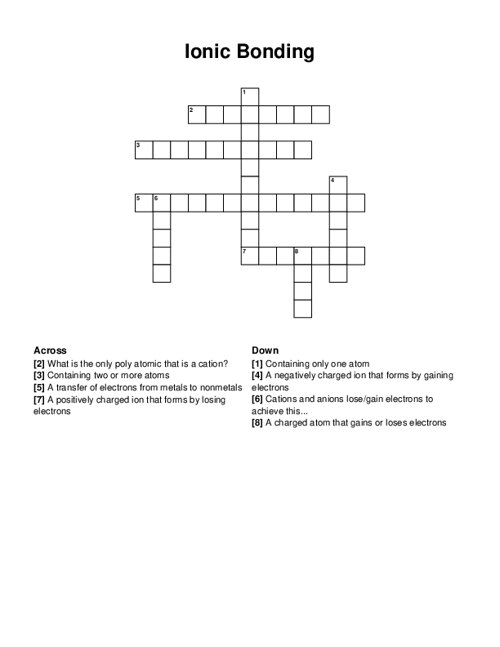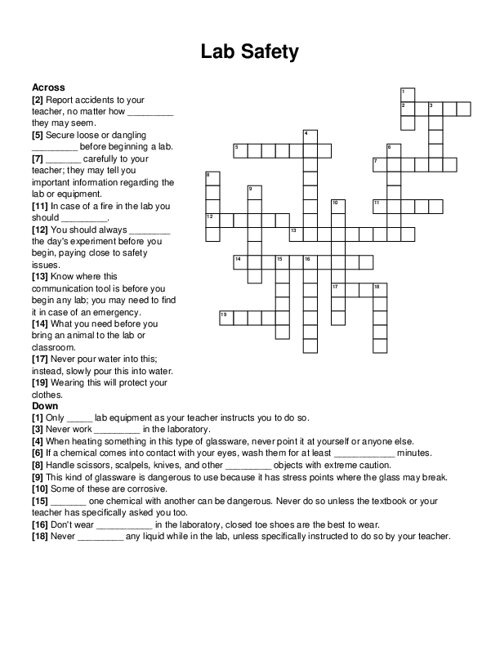Elements in the Periodic Table Crossword Puzzle
Download and print this Elements in the Periodic Table crossword puzzle.
Related puzzles:
QUESTIONS LIST:
- hydrogen : it is the lightest and most abundant element in the universe, typically found as a gas. it is commonly used in fuel cells and plays a key role in producing water.
- helium : is an inert noble gas. it is often used in balloons, airships, and as a cooling agent. it is non-flammable and lighter than air.
- lithium : is a soft, silvery metal. it is essential in rechargeable batteries and mood-stabilizing medications. lithium reacts when it comes into contact with water.
- beryllium : is a strong, lightweight metal. it is used in aerospace materials and x-ray equipment, though it is toxic if inhaled.
- boron : it is a hard, black metalloid. it is used in fiberglass, detergents, and neutron absorbers in nuclear reactors. boron is also important for plant growth.
- carbon : has an atomic number of 6. it is a versatile element found in all living organisms and forms the basis of organic chemistry. it exists in different forms like diamond and graphite and is essential in fuels and polymers.
- nitrogen : with an atomic number of 7, makes up about 78% of the earth’s atmosphere. it is essential for the production of proteins and dna in living organisms and is used in fertilizers and explosives.
- oxygen : has an atomic number of 8. it is a crucial element for respiration in most life forms and is highly reactive. it is also a major component of water and is used in combustion and medical applications.
- fluorine : with an atomic number of 9, is the most reactive and electronegative of all elements. it is found in fluoride compounds, which are used in toothpaste, teflon, and refrigerants.
- neon : has an atomic number of 10 and is a noble gas. it is known for its use in neon signs and lighting. it is inert and non-reactive, making it useful in certain high-voltage indicators and vacuum tubes.
